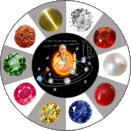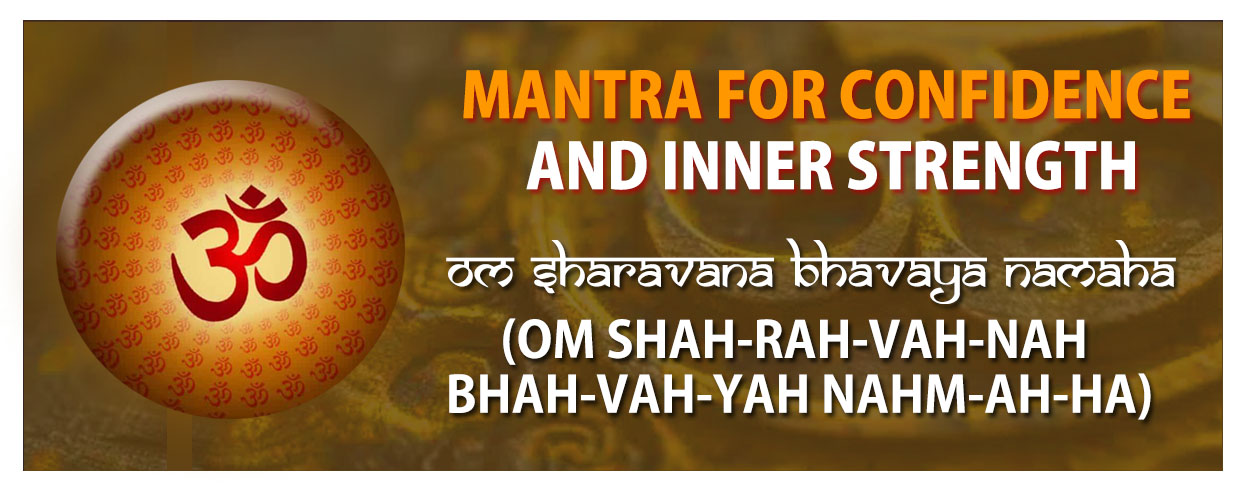Mantra For Confidence and Inner Strength
High school geometry courses teach that, from even a small segment of a circle, you can infer the circumference, diame-ter, area, and all other vital information pertaining to the fig ure. Just a few centimeters of perfectly curved line provides all the information necessary to accurately arrive at the characteristics of the circle it indicates. Since 1973, I have experimented with mantras for a variety of conditions and circumstances. The experience gained over those years represents a few centimeters of perfectly curved lines: I know that mantras work, and work powerfully This chapter provides mantras you can use to gain power for the pursuit of your spiritual, creative, educational, and professional goals.
Mantra For Confidence and Inner Strength
From time to time I am approached by peoples particularly WO en, who profess a lack of self-confidence. In such cases, I always recommend the following mantra. In fact, I wish I could give this mantra to every woman who has doubts about her own abilities or her own power. Associated with the feminine principle, this mantra produces an extremely powerful effect, giving a sense of one’s power and tiel wisdom to use that power wisely.
Om Eirn Hrim Chamundaye Vichei Namaha
(om I M HREEM KLEEM CHA-MOON-DAH-YEI VEE-CHEH NAHM-aH-HA)
“Om and salutations to she who is radiant with power and wisdom.”
Om is the seed of unity of feminine and masculine energies at the brow center. Eim is the seed sound for Saraswati, who presides over sound, the arts, and science both spiritual and material. This energy is also associated with dispelling certain types of negative energy. Hrim (as before) is a seed sound for dissolving the appearance of reali Klim (as before) is a seed sound for attraction. Chamundafil is a beautiful aspect of the feminine which, nonetheless, can be utterly destructive to a wide variety of negative forces and influences. lei is a Shakti-activating sound. Namaha has previously been discussed in detail.
As with many mantras. the effects produced by saying this one varies according to the user. One woman reported that this mantra produced a feeling of joy so intense that she did not want to stop reciting it.
Good-Luck Mantra :
Om Sharavana Bhavaya Namaha
Like Ganesh, the god invoked in this mantra is a son of Shiva and Parvaii. Whereas (;anesha is very close to his mother, and thus assci-ated with an almost primal power, Skanda (or Kartikeya he goes by!. several names) is more associated with Shiva and consciousn which may also act as a directed force. Here, the individual conscious-ness is imbued with strength, optimism, and auspiciousness,. T conditions seem to produce “good luck” or a general good outa from a variety of circumstances.
Om Sharavana Bhavaya Namaha
(OM SHAH-RAH-VAH-NAH BHAH-VAH-YAH NAHM-AH-HA)
” om and solutations to the son os Shiva, who brings auspiciousness and who is chief of the celestial army.”
Spiritual Growth
There are many mantras that can help your spiritual growth and insight. One is :
Om Nama Shivaya
(OM NAH-MAH SHEE-VAH-YAH)
This Siddha mantra uses the universal elements that govern each chakra : earth, water, fire, air, and ether. The syllables Na, Ma, Shi, Va, and Ya help the chakras to better utilize the fundamental elements that predominate in the chakra. One who is a siddha is a perfected being. This mantra leads you powerfully toward spiritual maturity. Thus, this mantra is from the tradition of the path of Perfection of the Divine Ve-hicle, which refers to the human body in all of *its gross and subtle parts.
Mantra for Destruction of Negative Forces and for Protection
This is a mantra for the avatar of Vishnu known as Narasimha. A corn_ posite spiritual being with aspects of humanity, divinity, and animal nature all mixed together, this avatar defeated a supposedly uncon-querable one of great evil. While the mantra invokes powerful energy, one’s righteous internal attitude provides a buffer against misusing it. This mantra can backfire if used in a hateful way, because hate is con-trary to the nature of all Vishnu mantras.
Narasimha Ta Va Da So Hum
(NAH-RAH-SEEM-HA TAH VAH DAH SOH HUHM)
Narasimha is the principle for destroying the seemingly inde-structible. Ta is the seed sound (without “m”) of the lower leg from the knee to the ankle. Va is the seed (without “m” of the second chakra) for the genital center. Da is a sound for directing the energy for the highest good. So Hum brings the mind in tune with the divine self 1p vithin. According to Vedic lore, whenever evil influences rule the earth an incarnation of the Divine will arrive to save humanity. Narasimha was one such incarnation. It seems there was an evil ruler who was so powerful that he Could not possibly be defeated in battle. It V\y as said that He Could not be defeated during the day or the night. Nor by man nor beast. Nor could he be defeated either indoors or outdoors.”
‘Vishnu, in mercy and compassion, came to earth as Narasimha, a man-lion being. Narasimha sought out the evil tyrant’s dwelling place and \vaited. At twilight, he entered, found the tyrant, and drai • ed him to the threshold. Holding him firmly, Narasimha began to speak: “it is twilight, neither day nor night. It is on the threshold of your dwelling. neither inside nor outdoors. I am neither man nor beast, but a combi-nation of both. Therefore, I now destroy you.” And he ripped the evil tyrant into pieces.
From that time to this Narasimha has been invoked to gain free-dom from evil situations. A friend of mine named Frank came to me concerned that a rela-tive was attempting to gain undue influence over his father, who was dying. The relative seemed bent on gaining as much of the sizable in-heritance as possible. After meditating upon the problem for a few mo-ments, I recommended saying the Narasimha mantra below, at the rate of a minimum of five hundred repetitions per day. I told him a thousand repetitions per day would be better, if. he could manage it. The discipline was undertaken every day, with five hundred repetitions completed some days and a thousand repetitions chanted on other days. The inheritance issue was equitably settled for all family mem-bers when Frank’s father passed away several months later.
Sikh Mantra for Spiritual Advancement
Sikinism is a union of principles from Hinduism and Islam. Follow-ers of this religion are welcome in almost any culture because of their dedication to hard work and the improvement of the community in which they reside. This includes Islamic countries where very few out-
side religions are tolerated. Sikhism is, therefore, unique in its universal
acceptance among arious cultures and countries. This mantra invokes the energ.) of the ‘Inner Teacher and contact with the Great Ones of their religion who have come before.
Ek Ong Kar Sat Nam Sin i Wahe Guru
(EK ONG KAR SAHT NAHM SEE-REE WHA-HEI GOO-R00)
“There is One Creator who has created this creation. Truth is His name, He is so great we cannot describe His infinite wisdom.”
Spiritual Advancement Using Masculine and Feminine Energy
The following mantra is closely associated with the breath. It is in some of the ancient texts that So Hum is the subtle sound of breath itself.
So Hum
(SOH-HUHM)
When the autonomic nervous system becomes consciois instead of operating unconsciously, the mantra changes to Hum so.
Om Hum So Hum
(OM HUHM SOH HUHM)
There is no real translation for this mantra. It is concerned with energy, breath, and the placement of consciousness. It is one of the simplest and yet most powerful mantras for permanently altering your state of consciousness. It balances the masculine and feminine ener-gies and focuses their combined force.
Mantra for Compassion
This mantra invokes Shiva in a compassionate feminine form, closely
related to Durga.
Sarva Mangala Mangalyei Skive Sarvartha Sadikei Sharanyei Tryambakei Gaun Narayani Namostute



